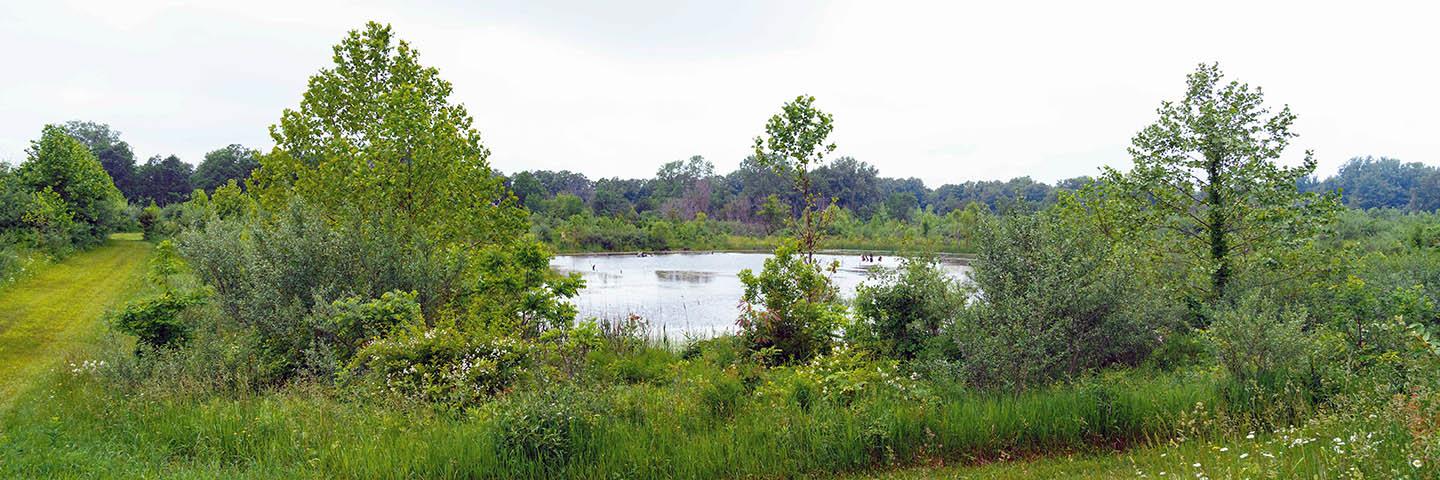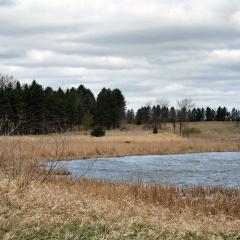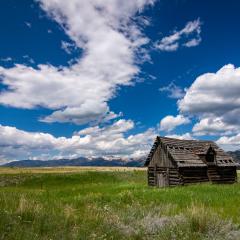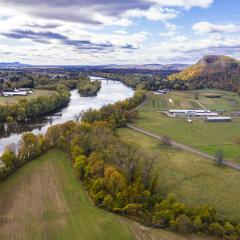Overview
NRCS provides technical and financial assistance directly to private landowners and Indian tribes to restore, protect, and enhance wetlands through the purchase of a Wetland Reserve Easement (WRE). For acreage owned by an Indian tribe, there is an additional enrollment option of a 30-year contract. For WRE, NRCS pays all costs associated with recording the easement in the local land records office, including recording fees, charges for abstracts, survey and appraisal fees, and title insurance.
Any interested farmer or rancher may submit an application for participation in WRE. The State Conservationist has established a sign-up period to select the highest ranked applications for funding based on the NRCS ranking process. WRE contract approval is dependent on program eligibility determinations.
ACEP-WRE applications must be received by January 5, 2024.
WRE Program Contact
Erik Bray, Easement Program Specialist
Natural Resources Conservation Service
Reno State Office, Nevada
Phone: 775-857-8500
Email: erik.bray@usda.gov
How to Apply
Please use the application forms and supplemental information below for submission.
To offer land for enrollment in WRE, eligible partners must submit all of the respective application documents listed above for the WRE Entity, Landowner, and Parcel to the Nevada State Office. Packets can be submitted by: email; USPS, FedEx, or UPS; or can be dropped off at your local NRCS office. If a packet is emailed, hard copies of all the documents will be required to be provided for records purposes. All WRE application packet documents must be complete, fully executed and received by 5:00 P.M. PST on January 5, 2024 to be considered for FY 2024 funding.
Submit application packets to NRCS by:
USPA, UPS or FedEx: USDA-NRCS State Office, Attn: Easement Programs, 300 Booth Street, Room 2070, Reno, NV 89509
Email:
- To: erik.bray@usda.gov
- cc: trina.johnson@usda.gov
- Subject Line: FY_24_ACEP_Landowner Name
- Email attachments naming convention: Landwoner_FY24_DOC or Form number/name_1 of X
- Submit the electronic application for ACEP-WRE as separate documents, single sided, PDFs
- Do not combine documents into one PDF or submit links to digital file boxes for downloading documents
- Hard copies of emailed documents will be required for record keeping purposes.
Drop off: Local USDA Service Center, NRCS Field Office, District Conservationist
Landowners may submit an ACEP-WRE application directly to NRCS. ACEP applications are accepted on a continuous basis, but the NRCS State Conservationist establishes annual sign-up periods to select the highest ranked applications for funding based on the NRCS ranking process. NRCS ACEP contract approval is dependent on program eligibility determinations.
All landowners of the property offered for ACEP-WRE enrollment must meet Farm Service Agency (FSA) payment eligibility criteria as it applies to the NRCS easement programs. Landowners are encouraged to work with FSA to complete the landowner program eligibility filings timely. The Nevada NRCS ACEP Applicant Eligibility Determination Deadline is February 2, 2024 for landowners.
Landowners should visit the FSA at a local USDA Service Center for assistance with establishing or updating their farm records and filing their program eligibility forms. If additional assistance is needed, please contact the local NRCS field office.
Eligibility
Landowner must meet FSA eligibility by February 2, 2024.
NRCS will use the checklists and other application materials submitted to determine application eligibility.
WRE program participation has land and landowner eligibility requirements. Land eligible for WRE enrollment includes farmed or converted wetland that can be successfully and cost-effectively restored. NRCS will prioritize applications based the easement’s potential for protecting and enhancing habitat for migratory birds and other wildlife. There are many other land eligibility factors that will be considered during application review and site visits to the property, including hazardous materials and title issues.
To enroll land into a WRE, NRCS enters into a purchase agreement with eligible private landowners or Indian tribes. The purchase agreement includes the right for NRCS to develop and implement a Wetland Reserve Plan of Operations (WRPO). The WRPO plan details the process to restore, protect, and enhance wetland functions and values.
WRE requires that all landowners of the property offered for enrollment meet the FSA payment eligibility criteria as it applies to the NRCS easement programs. Landowners must ensure they establish or update their property records and applicable payment eligibility filings with FSA for the Fiscal Year which the application will be submitted.
Ranking
The State Conservationist, in consultation with the State Technical Advisory Committee has developed ranking criteria to prioritize and subsequently fund applications addressing priority natural resource concerns in Nevada. Ranking assessments include a review of site vulnerability, existing conditions, and potential resource concerns identified on the land at the time of application.
FY 2024 WRE Ranking information can be found in the additional documents section below.
Easement Values
Easement values for WRE are based on the lowest value of an appraisal, a Geographic Area Rate Cap (GARC), or a landowner offer. To determine the GARC, Nevada uses a Market Analysis to assess the value of specific land uses in defined geographic areas. Sources and types of information considered in developing the GARC included data sets of prior appraisals for the easement program; location of the land; national, state, or local agriculture statistics; historical values accepted and rejected by landowners for program participation; rates paid by other conservation easement programs that have similar purposes; neighboring geographic areas.
The Nevada GARC can be found in the additional document section below.
Enrollment Options
There are three enrollment options under WRE: permanent easements, 30-year easements, and the grazing reserved rights option.
Permanent Easements: Permanent Easements are conservation easements in perpetuity. NRCS pays 100 percent of the easement values based on the lowest value of an appraisal, a GARC, or a landowner offer (as described above) for the purchase of the easement. Additionally, NRCS pays 100 percent of the restoration costs.
30-year Easements: 30-year easements expire after 30 years. Under 30-year easements, NRCS pays 75 percent of the easement values based on the lowest value of an appraisal, a GARC, or a landowner offer (as described above) for the purchase of the easement. Additionally, NRCS pays 75 percent of the restoration costs.
Grazing Reserved Rights Option: Nevada NRCS is offering a Grazing Reserved Rights Option in specific geographic areas of the state as part of WRE. Nevada intends to offer permanent and 30-year easement enrollments for FY 2023 at the prevailing rate of 75% of the 85% GARC or 63.75% of FMV for permanent easements, and 47.81% of FMV for 30-year enrollments that meet the criteria for enrollment.
Deeds for the three options can be found in the additional documents section below.






